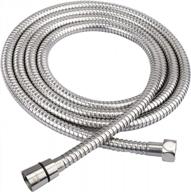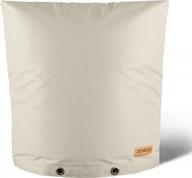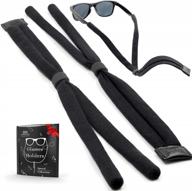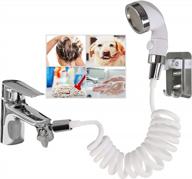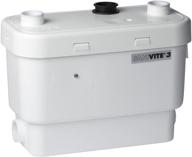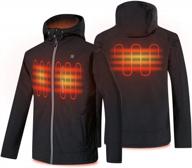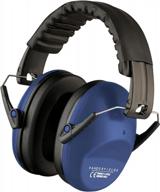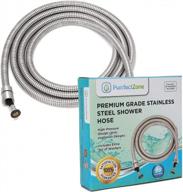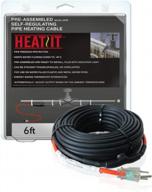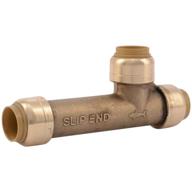Top products in 🚱 Pipes, Pipe Fittings & Accessories
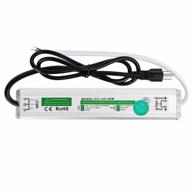

14 Review



13 Review

Choose the Right Pipe Material for Your Plumbing Project
When installing or replacing pipes for your plumbing system, one of the most important decisions is choosing the right material. The pipe material affects durability, longevity, pressure tolerance, corrosion resistance, ease of installation, and cost. Here's an overview of common pipe materials used in residential and commercial plumbing projects along with their key characteristics:
Copper
- Commonly used for supply lines, drainage lines, gas lines
- Corrosion resistant, durable, lightweight
- Easy to install and join using soldering
- Withstands high water pressure
- Expensive compared to other pipe materials
PVC (Polyvinyl Chloride)
- Used for drain, waste, and vent lines
- Rigid and durable plastic
- Resistant to chemicals and corrosion
- Inexpensive and easy to install
- Not suitable for hot water delivery
CPVC (Chlorinated Polyvinyl Chloride)
- Used for hot and cold water delivery
- Similar benefits as PVC but rated for higher temperatures
- More expensive than PVC
- Can withstand temperatures up to 200°F
PEX (Cross-Linked Polyethylene)
- Commonly used for water supply lines
- Flexible plastic tubing
- Resists corrosion and freezing
- Easy to install compared to rigid pipes
- Withstands high temperatures and pressure
Cast Iron
- Used for drain lines
- Durable but heavy and difficult to install
- Prone to rust and corrosion over time
- Works well for sewer and waste lines
Galvanized Steel
- Used for supply lines, drain lines, vents
- Coated with zinc for corrosion resistance
- Prone to rust over time
- Difficult to cut and install
Finding the Perfect Fit - A Guide to Pipe Fittings
Pipe fittings are essential components in plumbing and piping systems that allow pipes to be securely joined and routed in the necessary directions. Selecting the right fittings ensures leak-proof connections and optimal flow. Here is an overview of common types of pipe fittings and their applications:
Elbows
Elbow fittings are used to change the direction of the pipe. 90° elbows create a 90° turn while 45° elbows create a 45° turn. They are commonly found in bathroom and kitchen plumbing, allowing pipes to bend around corners.
Tees
Tee fittings are T-shaped and allow one pipe to be joined to another perpendicular pipe. They are useful when a branch line connection is required, such as connecting a faucet supply line to the main water supply line.
Couplings
Couplings are short fittings with female threads on both ends to connect two pipes. They allow pipes to be joined, extended, or repaired. An example is using a coupling to connect galvanized pipes under a bathroom sink.
Unions
Union fittings connect two pipes while allowing them to disconnected later without cutting. They consist of three pieces and are useful on supply lines that may require maintenance. Unions are commonly installed near water heaters for service access.
Reducers
Reducer fittings allow transition between two pipes of different sizes, usually larger to smaller in the direction of flow. They gradually taper from one end to the other. Reducers regulate pressure and velocity in piping systems.
Caps and Plugs
Caps and plugs provide permanent or temporary seals at the end of a pipe. Caps fasten to the exterior while plugs insert into the interior. They prevent leaks and debris from entering the piping system.
Adapters
Adapters connect pipes with different joint types, such as connecting a threaded male end to a solvent-welded female end. They allow the joining of incompatible components.
Bushings
Bushings are threaded fittings that reduce the size of an opening. They adapt larger piping to connect to smaller components and valves. For example, reducing a 3/4" pipe to connect to a 1/2" hose bibb valve.
Traps
Traps retain a small amount of liquid to prevent sewer gases and odors from entering the building. P-traps are commonly installed under sinks and toilets.
Valves
Valves control flow and regulate pressure. Gate, ball, and butterfly valves manage larger flows while globe and check valves precisely regulate smaller flows. Valves are critical components in plumbing systems.
There are many types of specialized fittings for various applications. When selecting pipe fittings, consider material compatibility, pressure ratings, size, and function. Consulting plumbing codes helps ensure proper installation for safe and optimized plumbing.
Accessorize Your Plumbing System
Like any system, a plumbing system relies on various components and accessories to optimize performance and prevent problems. Here are some ways to accessorize your plumbing:
Insulate Pipes
Insulating exposed water pipes prevents freezing in winter and keeps drinking water cooler in summer. Options include:
- Pre-slit foam tubing - Slip over pipes for quick insulation
- Wrap tape - Wrap pipes with this special waterproof tape
- Removable covers - Insulated covers that velcro around pipes
Install Drain Pan
A drain pan catches leaks from the water heater or leaks in supply lines. Choose plastic or metal pans with a drain outlet to route water safely away.
Use Drain Screens
Drain screens prevent debris from going down drains and causing clogs. Use in kitchen sinks, bathtubs, and shower stalls. Screens come in various styles:
- Strainer baskets - Sit in drain holes
- Sink nets - Lay across sink bottoms
- Tub shroom - Catches hair around drains
Install Pipe Insulation
Insulate pipes in cold areas like basements or garages to prevent freezing. Options include slit foam, wrap, and pipe covers.
Use Heat Tape
Heat tape warms pipes in extremely cold climates. The self-regulating tape only heats when needed to save energy.
Add Shut-Off Valves
Shut-off valves allow water supply to be turned on/off to certain fixtures for maintenance. Use near toilets, sinks, washing machines, etc.
Accessorizing helps boost efficiency, prevent leaks and clogs, and regulates temperature. Consult a plumber to ensure optimal accessories for your system.
DIY Plumbing Repairs Made Easy
Many minor plumbing repairs can be tackled by handy homeowners with basic skills. Here are some common fixes you may be able to do yourself:
Unclog Drains
Clogged sinks and tubs can often be cleared with a plunger or hand auger known as a "snake":
- Plunger - Cover drain completely to suction out debris
- Hand auger - Feed coil down drain to hook and extract hair/debris
- Boiling water - Heat helps dissolve grease clogs; pour down drain
- Baking soda and vinegar - Chemical reaction helps break up gunk
Replace Faucet Washers
Leaky faucets with separate hot/cold handles likely need new washers. Turn off water supply, pry off the handle, extract the old washer, and insert a replacement.
Fix Running Toilets
If a toilet keeps running after flushing, the flapper valve likely needs replacing. Turn off water, flush to empty tank, pop off old flapper, and install a new one.
Replace Supply Lines
Stiff, corroded supply lines under sinks and toilets should be replaced. Turn off water, detach old lines, install flexible braided steel lines, and reconnect.
Silence Noisy Pipes
Pipes may bang and clatter due to loose connections. Secure fasteners at joints and supports. Insulating pipes can also dampen noise.
Regrout Tile
Re-grouting around bathtubs and shower stalls prevents leaks. Remove old caulk, clean surfaces, apply grout, smooth, and let dry.
Take photos as you disassemble supplies for easy reassembly. Having the right tools and parts on hand is also key to DIY success. Know when to call a pro - some fixes require permits and inspections.
Maximize Water Flow with Strategic Pipe Sizing
Selecting the optimal pipe size is essential for maximizing water flow in plumbing systems. Oversized pipes waste money while undersized pipes restrict flow. Follow proper sizing techniques:
Measure Flow Rate and Velocity
Calculate required flow rates and velocities based on fixture demand. Factors include:
- Water consumption of fixtures
- Number of fixture units
- Peak demand times
- Average velocity needed
Choose Pipe Material
Pipe friction affects sizing needs. Materials like PEX and copper have lower friction than PVC and steel. Check friction loss charts.
Use Pipe Sizing Charts
Plumbing code charts recommend minimum pipe diameters based on:
- Fixture units
- Water demand
- Length of run
Factor in Pressure Loss
Friction decreases pressure over distance. Size pipes to account for acceptable pressure loss along the run.
Consider Future Demand
Right-size pipes for potential system expansion like adding bathrooms. Don't handicap future upgrades.
Mind the Size Transitions
Gradual transitions from larger to smaller piping maintain proper velocity and pressure. Use reducers.
A professional plumbing design will specify exact pipe sizes for optimal flow. Balance cost, flow rate, and pressure loss when sizing pipes in your system.
Common Plumbing Emergencies and How to Handle Them
Plumbing emergencies can cause extensive water damage if not addressed quickly. Here are some common issues and steps you can take:
Burst Pipe
Ruptured pipes lead to massive leaks. Signs include low water pressure and water spots on walls or ceilings.
- Turn off main water shut-off valve
- Open faucets to drain remaining water from pipes
- Call a 24-hour emergency plumber for repairs
Clogged Drain
Clogged drains or toilets can flood bathrooms. Try a plunger first. For deeper clogs:
- Use a drain snake/auger to remove debris
- Call a plumber if you can't clear it yourself
No Hot Water
Check power and gas/fuel supply first. If issue persists:
- Check water heater temperature settings
- Inspect pilot light or heating elements
- Flush tank to remove sediment
- Call for water heater repairs if needed
Running Toilet
Toilets that keep running constantly waste water. Attempt toilet repair:
- inspect flapper valve for cracks
- clean debris from flush valve seat
- adjust float level
For major leaks or burst pipes, turn off water immediately and call an emergency plumber to prevent structural damage.
Innovations in Pipe Technology - What's New and Exciting
Pipe manufacturers continue innovating with new materials, coatings, and designs. Here are some of the latest advancements making an impact:
Plastic Pipes
Engineered plastics like PEX, PP-R, and CPVC offer benefits versus traditional metal pipes:
- Corrosion resistance
- Lightweight yet durable
- Easy, watertight connections
- Flexibility to navigate tight spaces
Anti-Microbial Coatings
New EPA-registered coatings prevent microbial growth inside pipes. Helpful for:
- Drinking water safety
- Hospitals and healthcare facilities
- Commercial kitchens and bathrooms
Self-Cleaning Pipe Interiors
Some modern drain pipes have omniphobic coating that repels all liquids. Allows scum to slide cleanly through pipes.
Leak Prevention Systems
Smart monitoring systems detect leaks and automatically shut off water. Help conserve water and prevent damage.
Trenchless Pipe Relining
Epoxy resins can reline degrading pipes from the inside with no digging. Restores structural integrity.
Robotics for Inspection
Automated robots with cameras inspect hard-to-reach pipes. Provides condition assessment data.
Implementing the latest technology improves efficiency, safety, and sustainability. Consult engineers to leverage innovations that enhance your plumbing systems.
Similar products
What is the use of Amazon Prime for a regular buyer of "Pipes, Pipe Fittings & Accessories"?
For those who frequently purchase plumbing supplies like pipes, fittings, and accessories, an Amazon Prime membership can provide several useful benefits:
Free Two-Day Shipping
Amazon Prime offers free two-day shipping on millions of eligible items. This means you can get the parts you need quickly without paying extra for expedited delivery. When you need a last minute fitting or valve for a weekend plumbing project, Prime ensures you get it in time.
Free One-Day Shipping
Amazon has expanded free one-day shipping to many zip codes on qualifying orders over $35. For urgent plumbing repairs, you can order a replacement part in the morning and have it on your doorstep that same evening.
Free Returns
Amazon Prime members get free returns on most items. This makes it easy to order plumbing supplies, test for proper fit, and return any unsuitable parts at no extra cost. Helpful for trying out new pipes, fittings, and accessories.
Prime Early Access Deals
Get exclusive early access to deals on pipes, valves, fixture, tools, and other plumbing equipment. You can take advantage of special discounts and bulk pricing only available to Prime customers.
Prime Video and Music
Enjoy streaming movies, TV shows, and music while you work on plumbing projects. The Prime Video and Music libraries help pass the time during long installations or repairs.
For frequent plumbing supply orders, a Prime membership can pay for itself with the free expedited shipping alone. The other benefits are just icing on the cake for avid DIYers.
Another interesting products


27 Review

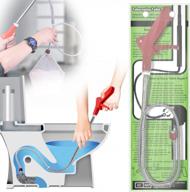

41 Review

Find The Right Pipe Fittings For Your Plumbing Project
When starting a plumbing project, it is essential to find the right pipe fittings to ensure the success of the project. Plumbing fittings vary by size, purpose, and material. The first thing you need to know is what type of pipes your home uses, and you'll need to match the pipe fitting with the pipe's material. Factors to consider when choosing the right type of fittings and pipes include material, size, type of project, and budget. It is crucial to choose the one that best fits your specific application and budget. Pipe fittings can connect pipes together to lengthen the run, divert or reduce the water flow, or even change the flow direction within the plumbing system. A plumbing inspector will look for very specific fittings to perform certain tasks, so it is essential to use the right fitting to avoid tearing out the job.
What Are The Different Types Of Pipe Fittings?
There are various types of pipe fittings available for different purposes and functions. Here are some of the most common types of pipe fittings used in plumbing systems:
These fittings can be made of various materials, including copper, iron, brass, PVC, and more. The type of fitting you need will depend on the specific requirements of your plumbing project.





